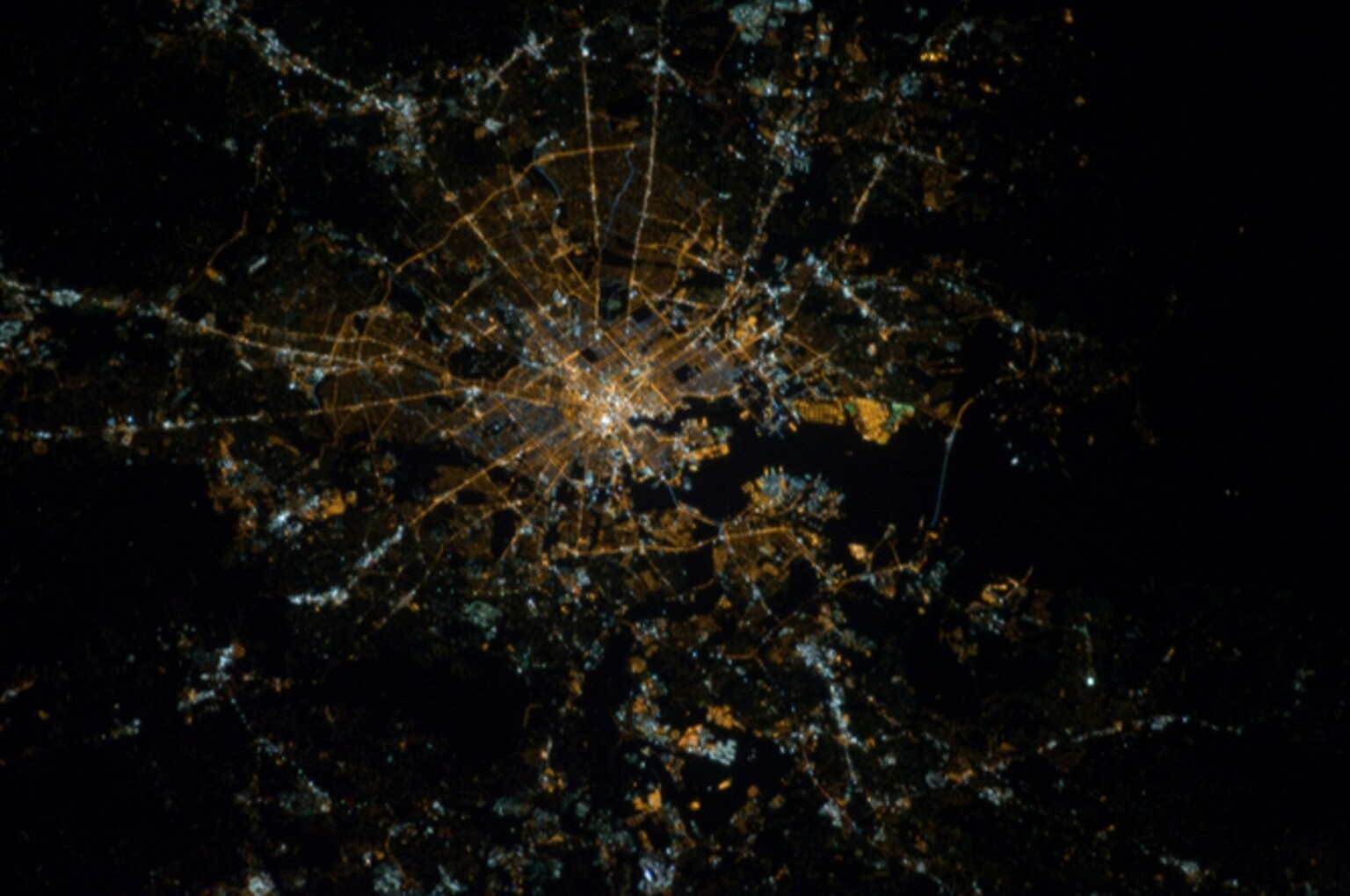

This video uses the Earth at night view created by NASA's Earth Observatory with data processed by NOAA's National Geophysical Data Center and combined with a version of the Earth Observatory's Blue Marble: Next Generation. It took 312 satellite orbits and 2.5 terabytes of data to get a clear shot of every parcel of land surface. This new image is a composite of data acquired over nine days in April and thirteen days in October 2012. The day-night band on VIIRS detects light in a range of wavelengths from green to near infrared and uses filtering techniques to observe signals such as city lights, gas flares, and wildfires. A joint program by NASA and NOAA, Suomi NPP captured this nighttime image by the satellite's Visible Infrared Imaging Radiometer Suite (VIIRS). This view of Earth at night is a cloud-free view from space as acquired by the Suomi National Polar-orbiting Partnership Satellite (Suomi NPP). On Twitter, Facebook, Google News, and Instagram.In daylight our big blue marble is all land, oceans and clouds. Explanation: This is what the Earth looks like at night. Image Credit: NASA, Suomi NPP VIIRS Data: Miguel Romn ( NASA GSFC ) Processing: Joshua Stevens. This single exposure image was captured in early January near Knight's Ferry, California, USA.įollow HT Tech for the latest tech news and reviews, also keep up with us Each day a different image or photograph of our fascinating universe is featured, along with a brief explanation written by a professional astronomer. Reflections and refractions of sunlight from raindrops in a distant storm in the direction of the rainbow are what causes the colorful bands of light. This rainbow's arc indicates that its center is about 40 degrees to the left and slightly below the horizon, while the Sun is well behind the camera and just above the horizon. The center of a rainbow always appears in the direction opposite the Sun, but that direction lines up differently on the horizon from different locations. The reason is because a rainbow's position depends on the observer. Others nearby, though, would likely see the rainbow end somewhere else. For the photographer taking this picture, for example, one end of the rainbow ended at a tree. What lies at the end of a rainbow? Something different for everyone. The picture was captured by published landscape and wildlife photographer Eric Houck in early January near Knight's Ferry, California, USA.


 0 kommentar(er)
0 kommentar(er)
